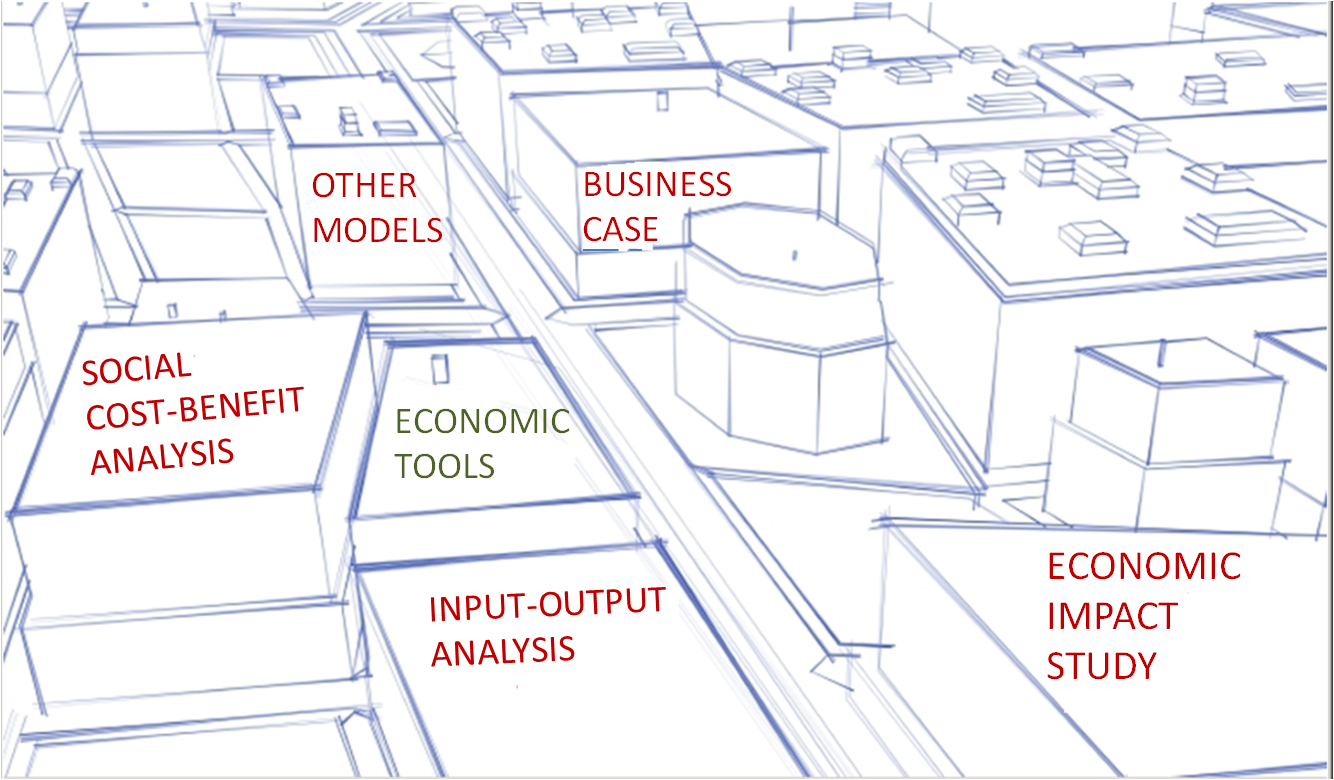Difference between revisions of "Other economic tools"
| Line 20: | Line 20: | ||
<imagemap> |
<imagemap> |
||
Image: |
Image:Economic_tools_v7.png| 350 px |
||
rect |
rect 60 321 319 487 [[Social cost-benefit analysis|Social cost-benefit analysis]] |
||
rect |
rect 360 550 716 763 [[Input-output analysis|Input-output analysis]] |
||
rect |
rect 382 349 600 500 [[Economic tools|Economic tools]] |
||
rect |
rect 289 148 456 277 [[Other economic tools|Other economic tools]] |
||
rect |
rect 574 162 790 271 [[Business case|Business case]] |
||
rect 978 521 1301 759 [[Economic Impact Study|Economic impact study]] |
|||
desc bottom-left |
desc bottom-left |
||
Revision as of 07:01, 8 May 2012
Contents
Other economic tools
Introduction
Apart from the commonly used economic impact studies, social cost-benefit analysis and business cases, there are other types of commonly carried out economic analyses, which are briefly addressed below:
Demand analysis
A demand analysis estimates or predicts the amount of some good (or service) that consumers are willing and able to purchase. For this, economists use sales estimations, forecasting or a demand model. a typical question that is answered in this type of study is: How will the number of users of an urban object (e.g, a road or an airport) change due to the changes in prices, promotion, reachability et cetera?
Financial analysis
A financial analysis assesses the viability of a business/activity, and aims to answer the question if it is possible to make profit from this activity? This kind of analysis is also referred to as a financial statement or accounting analysis. "It generally includes a short-term analysis of the availability and costs of start-up capital as well as a longer-range analysis of debt service, operating costs and revenues"[1].
Fiscal impact analysis
Analogous to a financial analysis of private companies, a fiscal impact analysis "identifies changes in demands for government utilities and services resulting from some action and estimates the revenues and costs to local government to provide these services[2].
Feasibility study
"A feasibility study determines the feasibility of undertaking a given action to include political, physical, social and economic feasibility. The economic aspects of a feasibility typically involve a financial analysis to determine financial feasibility and a market demand analysis to determine market feasibility". A feasibility study is the private sector analogue of the social cost-benefit analysis" [3].
Related subjects
Urban planning processes employ a host of economic tools/models (see clickable map):
Other related subjects:
Footnotes and references
MAP
<websiteFrame> website=http://securipedia.eu/cool/index.php?wiki=securipedia.eu&concept=Other_economic_tools height=1023 width=100% border=0 scroll=auto align=middle </websiteFrame>
<headertabs/>

